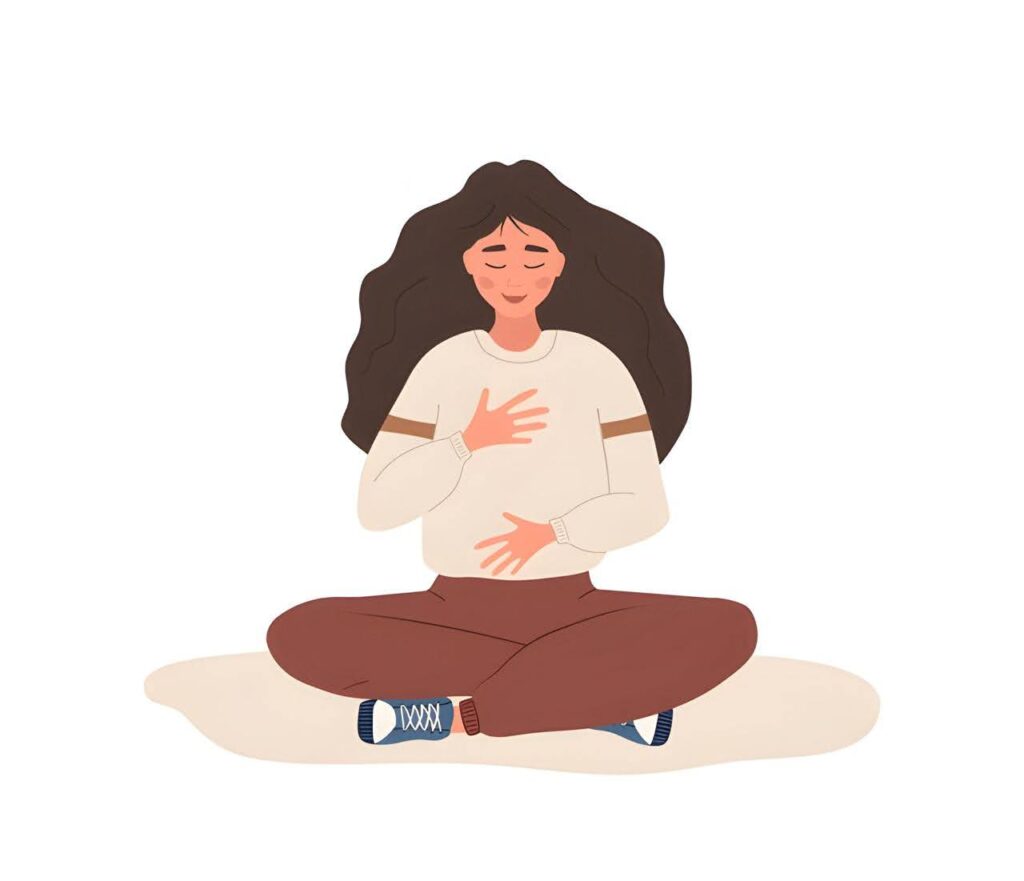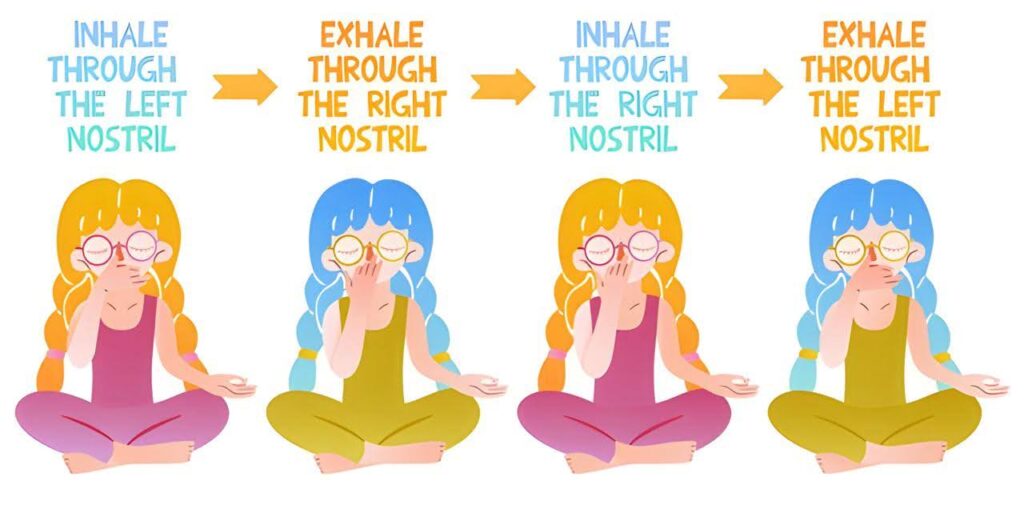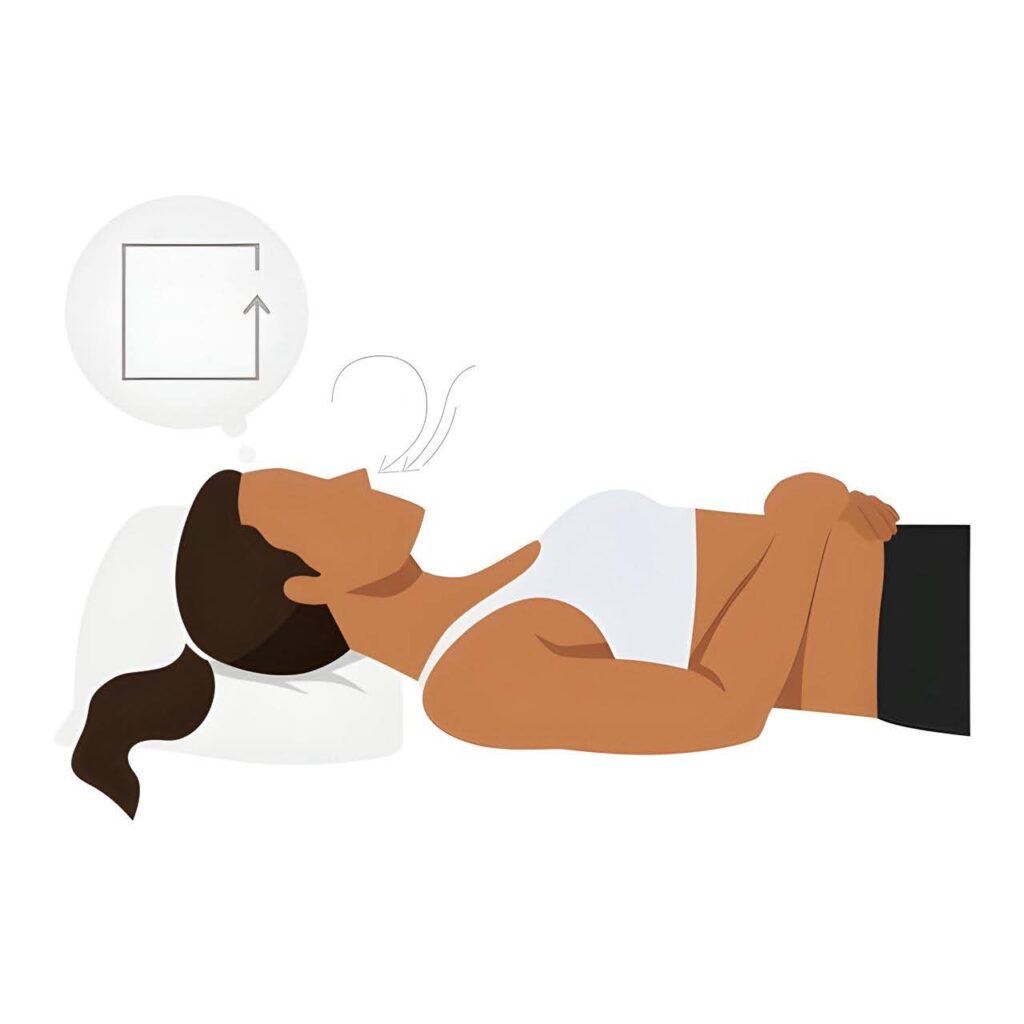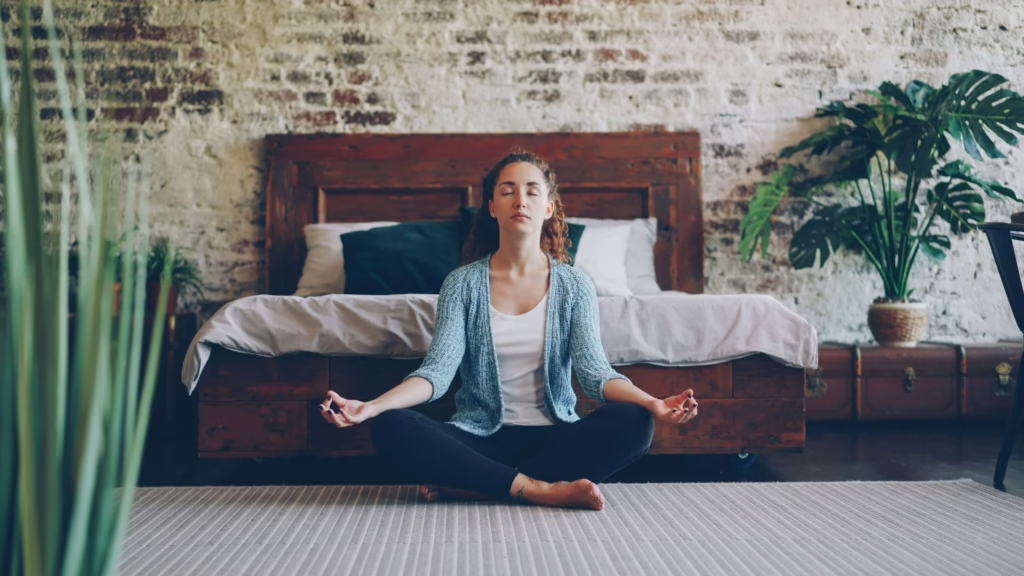How may breathing influence our mental state or how does breathing help one relax? You might not have given this much thought before.
One of the best ways to unwind and release tension is to pay close attention to deep, deliberate or consciously breathing. Our bodies automatically rest when we inhale slowly and deeply.
Breathing is intimately connected to relaxation through the body’s natural reaction to stress and anxiety. For Example, our shallow and quick breathing under stress or anxiety can aggravate tension and uneasiness. This is so because the body’s “fight or flight” reaction releases cortisol and adrenaline into the bloodstream.
Relevant blog to read: How to Get More Deep Sleep
How Breathing Helps Calm the Mind
Our neurological system is fundamental in the link between thought and respiration. When we’re anxious or agitated, our breathing becomes shallow and rapid, which might make things worse.
On the other hand, our neurological system reacts by encouraging relaxation and lowering anxiety when we inhale deeply and slowly. This is because our breathing patterns are intimately related to our brain and nervous system.
How does breathing help one relax?
Slowing Your Breath Reduces Racing Thoughts and Induces Relaxation
- Activating the parasympathetic nervous system: Deep breathing activates the parasympathetic nervous system, which promotes relaxation and reduces anxiety.
- Increasing GABA levels: Deep breathing increases GABA levels, which is a neurotransmitter that helps regulate anxiety and relaxation.
- Decreasing beta brain waves: Deep breathing decreases beta brain waves associated with anxiety and stress.
Breathing Techniques for Relaxation
When practiced properly, breathing exercises are an effective means of stress reduction. Here are some thorough directions on how to conduct several breathing techniques to help you relax:
1. Diaphragmatic Breathing (Belly Breathing)
- Step 1: Find a comfortable seated or lying position with your back straight.
- Step 2: Grasp the belly with one hand and your chest with the other.
- Step 3: Inhale slowly through your nose, allowing your belly to rise as your diaphragm descends. As you inhale, your hand on your belly should travel outward.
- Step 4: Exhale slowly through your mouth, allowing your belly to fall as your diaphragm rises. As you release the breath, the hand on your belly should travel inside.
- Step 5: Repeat for 5-10 minutes, focusing on the sensation of your belly rising and falling.

2. 4-7-8 Breathing (Relaxation Breathing)
- Step 1: Find a comfortable seated or lying position with your back straight.
- Step 2: Inhale through your nose for a count of 4, filling your lungs.
- Step 3: Hold your breath for a count of 7.
- Step 4: Exhale through your mouth for a count of 8, emptying your lungs.
- Step 5: Repeat for 5-10 minutes, focusing on the counting and the sensation of your breath.

Relevant blog to read: 4-7-8 Breathing Technique: Your Guide to Instant Relaxation
3. Alternate Nostril Breathing (Also called Anuloma-Vilom yoga)
- Step 1: Find a comfortable seated position with your back straight.
- Step 2: Place your right hand in front of your face, with your thumb and pinky finger forming a “V” shape.
- Step 3: Close your right nostril with your thumb and inhale through your left nostril.
- Step 4: Close your left nostril with your pinky finger and exhale through your right nostril.
- Step 5: Inhale through your right nostril, close it with your thumb, and exhale through your left nostril.
- Step 6: Repeat for 5-10 minutes, alternating nostrils with each breath.

4. Box Breathing
- Step 1: Find a comfortable seated or lying position with your back straight.
- Step 2:Breathe in until your lungs are full, which should take 4 counts.
- Step 3: For 4 counts, hold your breath.
- Step 4: Exhale for a count of 4, emptying your lungs.
- Step 5: Hold your breath again for a count of 4.
- Step 6: Repeat for 5-10 minutes, focusing on the counting and the sensation of your breath.

5. Breathing and Mindfulness Meditation
- Step 1: Find a comfortable seated or lying position with your back straight.
- Step 2: Close your eyes and focus on your breath, feeling the sensation of the air moving in and out of your body.
- Step 3: When your mind wanders, gently bring your attention back to your breath without judgement.
- Step 4: Continue for 5-10 minutes, cultivating a sense of awareness and presence.

Relevant blog to read: Best Breathing Exercises for Sleep and Relaxation: Unlock Deeper Rest
The Benefits of Controlled Breathing for Relaxation
Controlled breathing techniques have many positive effects on both mental and physical health. Let’s see how breathing helps you relax:
Mental Health Benefits
- Improve focus: By slowing down your breath, you can calm your mind and improve your concentration.
- Reduce stress and anxiety: Deep breathing can help reduce stress hormones, such as cortisol, and promote relaxation.
- Enhance mood: Controlled breathing techniques can increase the production of neurotransmitters, such as serotonin and dopamine, which can help improve your mood.
Physical Health Benefits
- Better sleep: Deep breathing for stress relief can help regulate your sleep patterns and improve the quality of your sleep.
- Lower blood pressure: Regular controlled breathing practice can help lower your blood pressure and reduce your risk of heart disease.
- Improved immune function: Deep breathing can help boost your immune system and reduce your risk of illness.
How Controlled Breathing Techniques Works
- Releasing endorphins: Controlled breathing can help release endorphins, which are natural painkillers that can promote feelings of well-being and relaxation.
- Increasing oxygenation: Deep breathing helps you relax by increasing the body’s oxygenation, which will improve cognitive performance and lower stress.
Tips to Practice Controlled Breathing
Here are some tips to practice calm breathing:
- Find a quiet and comfortable location where you can sit or lie down without being distracted.
- Close your eyes and focus on your breathing.
- Use visualizing techniques, See a pleasant scene, such a calm beach or a serene forest as you inhale. This might improve the relaxation power of deliberate breathing.
- Try Using an App or Timer, It will help you stay in rhythm, several apps include soothing noises or visual signals.
How Breathing Helps During Anxiety or Stressful Situations

Here are some suggestions on how to apply these principles in your daily life:
Before the Stress Hits
- Practice, practice, practice: Regularly practice the breathing techniques mentioned previously until they become second nature to you. This will help you create muscle memory and boost your chances of using it in stressful situations.
- Identify your triggers: Be mindful of the situations, emotions, and thoughts that cause your stress response. This will allow you to prepare and employ your breathing strategies more proactively.
In the Heat of the Moment
- Take a pause: When you feel yourself getting stressed or anxious, take a brief pause (even just 10-15 seconds) to focus on your breath. This simple act can help calm your nervous system and clear your mind.
- Use a quick breathing technique: Choose a simple technique like diaphragmatic breathing or 4-7-8 breathing, which can be done quickly and discreetly. Focus on the sensation of your breath, and try to let go of distracting thoughts. That’s how breathing helps you relax.
- Anchor yourself: Use your breath as an anchor to return to the present moment. Concentrate on the sensation of air flowing in and out of your body, and tell yourself that you are secure and capable of dealing with the circumstance.
Tips for Specific Situations
- Before a meeting or presentation, take a few minutes to practice diaphragmatic breathing or 4-7-8 breathing to calm your nerves and focus your mind.
- During a conflict or argument: Use alternate nostril breathing to help you stay calm and centered. This technique can also help you communicate more effectively and respond rather than react.
- During a panic attack: Use breathing and mindfulness meditation to focus on your breath and bring yourself back to the present moment. Remember that you are safe, and the panic will pass.
Relevant blog to read: Breathing Techniques for Anxiety: 5 Proven Ways to Calm Your Mind
Conclusion
Mindful Breathing: A Path to Long-Term Relaxation
Including conscious breathing exercises in your daily life can significantly improve your general condition. Regularly applying such strategies allows you to improve emotional control, sharpen focus, etc. If you want to learn how to do it, go to mywellbeing.me. The platform offers guided breathing exercises that you can practice at your own pace. Whether you’re looking to de-stress, improve concentration, or simply enhance your mental and physical health, these exercises provide an accessible way to nurture your well-being.
Frequently asked questions
Breathing helps you relax by lowering blood pressure, slowing the heart rate, and calming the neurological system, all of which contribute to a reduction in stress and anxiety.
Diaphragmatic breathing, also known as belly breathing, is the most effective relaxation breathing technique because it involves the diaphragm and generates a sense of peace.
Yes, breathing exercises can help with anxiety by soothing the nervous system, lowering symptoms, and instilling a sense of relaxation and peace of mind.
Breathing exercises for relaxation should be practiced daily, ideally 2-3 times each day for 5-10 minutes each, to reap the benefits of reduced stress, anxiety, and overall well-being.
Listen to our Podcast
Also available on Youtube and Apple Podcast.
Author’s note
Thank you for taking the time to focus on your well-being and for being your own cheerleader in this journey called life. I truly appreciate you for choosing to invest in yourself today, and I’m honored that you spent a part of your day here. Remember, every small step you take matters, and you’re doing an amazing job. Keep going—you’ve got this!
💛 Support Our Mission
If you find our content helpful and inspiring, consider supporting us with a small donation.
Your kindness helps us grow, write more meaningful articles, and reach more hearts.
You can donate via PayPal — every bit counts! 🙏






15 Comments